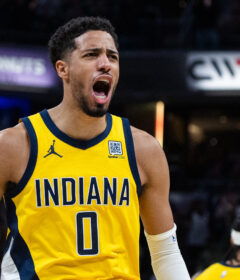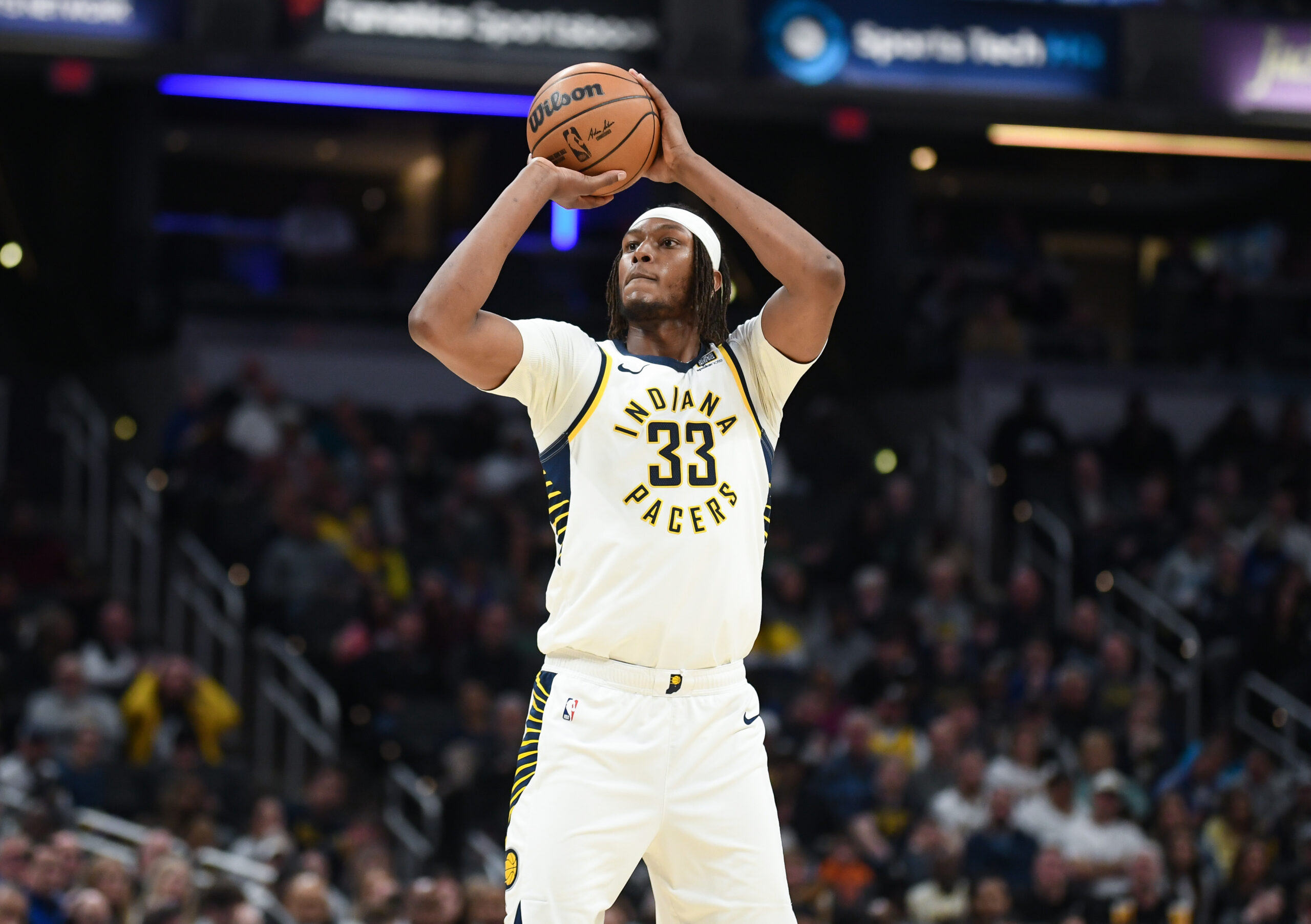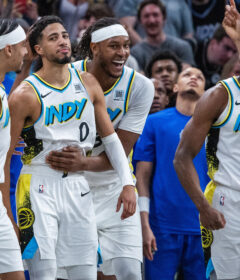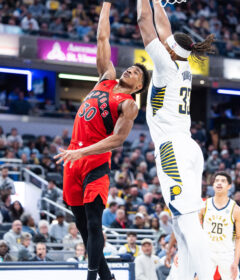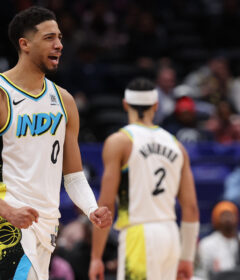Why ball security is Pacers’ last hurdle
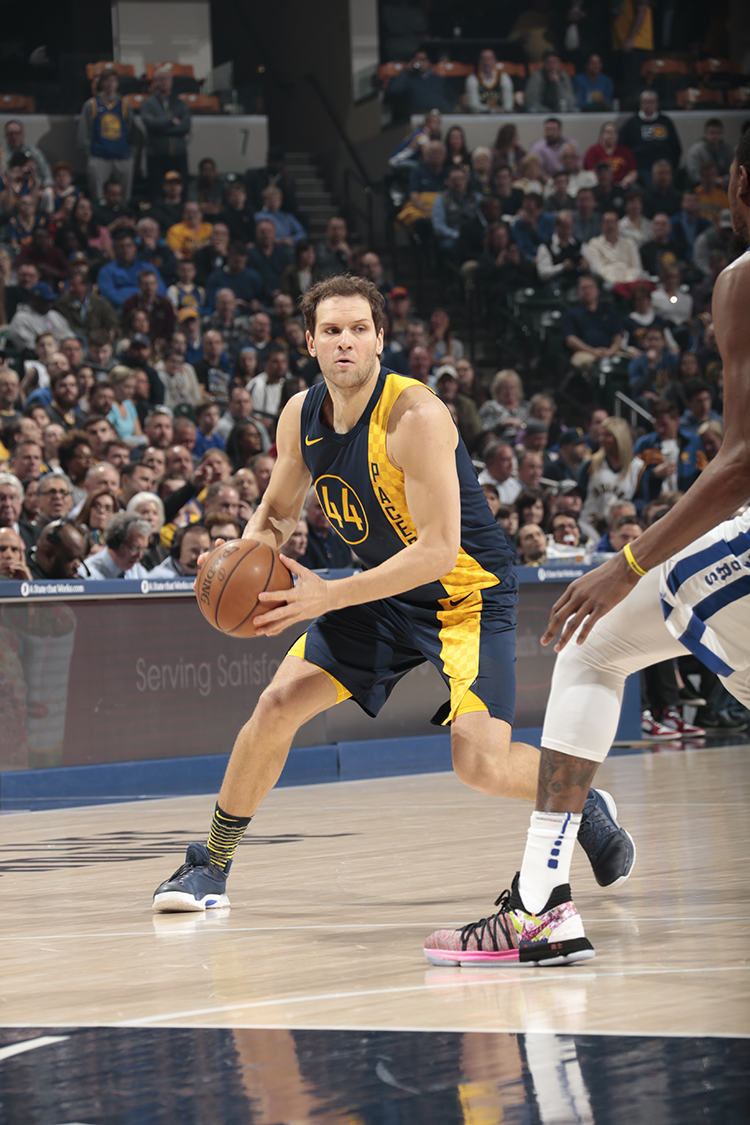
By CHRIS GOFF (@PacersScribe)
Perhaps the most shocking part of the Pacers’ Game 3 win over Cleveland on Friday night was that it occurred despite Indiana’s inability to take care of the basketball.
The Pacers committed a staggering 20 turnovers, which was peculiar given the two teams’ regular-season profiles. Indiana was among the league’s best at avoiding turnovers and the Cavaliers among the worst at forcing them.
Yet the Pacers – at least initially – seemed completely flustered by the Cavs’ tactics against Victor Oladipo. A second defender would race out to trap Oladipo on the perimeter and force the ball out of his hands, leaving Indiana’s offense in the hands of others after Oladipo was forced to unload the ball.
The other Pacers – at least in the first half – weren’t dependable enough with ball-handling to make Cleveland’s defense pay. While it’s true coach Nate McMillan made halftime adjustments for the all-out double-teams Cleveland was sending at Oladipo, it’s hard to write off the Pacers’ many miscues as a fluke. They gave the ball away 17 times in Game 2, after all.
Right now, to the surprise of many, it’s Indiana’s series. If the Pacers are to maintain their advantage in this best-of-seven first-round showdown, they’ll need much crisper passing tonight in Game 4 at Bankers Life Fieldhouse.
Before we get into any of the particulars on that, let’s be clear about why Indy leads two games to one.
Believe it or not, the Pacers’ defense has figured out a way to shut down a LeBron James-led offense. During the regular season, Cleveland was fifth in the NBA in offensive production at 110.6 points per 100 possessions. In the first three games of this playoff series, the Cavs are limping along at 96.9 points per 100 trips.
To understand the magnitude of this decline, that performance would have ranked Cleveland 30th among the league’s 30 teams had it come in the regular season.
However, if anyone had been paying real close attention to the Pacers’ defense, perhaps they could have seen this coming. After the All-Star break, Indiana ranked eighth in the NBA in points allowed per possession. Over the whole season, Indy finished second in the NBA by forcing turnovers on 15.7 percent of opponent possessions. Thus, it’s no wonder Cleveland is averaging 16 turnovers a game in this series.
The real mystery going forward isn’t whether the Cavs’ flagging offense will recover, because their whopping drop in 3-point shooting is almost certainly a fluke. The Cavs are shooting the 3 about as often as they did in the regular season but not nearly as effectively, with a dip in accuracy from 37.2 percent to 30.9 percent.
No matter what Cleveland does, the story for the Pacers from here on out will be whether they can simply get a shot off.
The Cavs’ small lineups (all but two minutes all series without a real center) have been vulnerable to Indiana’s size. Indiana converted 46 percent from the field in Game 1, 53 percent in Game 2 and 47 percent in Game 3. When the Pacers get a shot away, it usually goes in.
That’s why the fact that they are turning the ball over at a higher rate (17 percent of possessions) than they did in the regular season (13.5 percent) is a pivot point.
One option for the Pacers to deal with ball security is returning to more of the two-point guard lineup that has been part of their success. Starter Darren Collison and backup Cory Joseph played 528 minutes together in the regular season but just 15 in the first three games of this series.
“Got to do a better job taking care of the ball,” McMillan said. “We had 20 turnovers. You’re not going to win many games with 20 turnovers.”
They did it once, but clean up the sloppiness, and Indiana’s in good shape.

